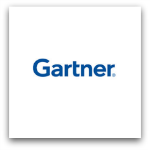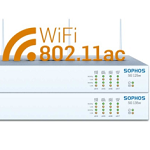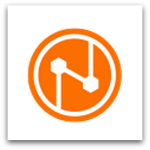News
Sophos today announced that for the second consecutive year it has been positioned in the Visionaries Quadrant of Gartner’s Magic Quadrant for Enterprise Mobility Management Suites (EMM)¹. We believe Sophos is positioned as a Visionary due to its unique understanding of the rapidly evolving mobility landscape.
In addition to Gartner’s acknowledgement, Forrester Research recognizes Sophos as one of the 15 most significant vendors in the EMM space. In the recent follow-up report to the Forrester Wave², it notes Sophos’ “robust endpoint, encryption, and EMM products. Sophos offers strong data, app, OS, and network protection features and has a compelling vision of managing security as a system with deep integration between its mobile, advanced endpoint (laptop/desktop), web, and network security technologies.”
“Sophos delivers the most user-friendly security that empowers employees while mitigating the risks inherent in trends such as BYOD,” said Dan Schiappa, SVP and GM of the Sophos Enduser Security Group. “Businesses can protect their corporate data and maximize their productivity on mobile phones. This is what makes Sophos attractive to small and mid-sized enterprises that do not have large IT staff and has resulted in a 50 percent increase in Sophos Mobile Control installations in the past year”.
With a new self-service portal, Sophos Mobile Control 5 makes compliance with corporate security policy simple for both administrator and end user across iOS 8, Windows Phone and Android platforms. Sophos also delivers advanced anti-malware, anti-spam and web protection for Android devices, as well as network access control to reduce the risk of data breaches.
You can read the original article, here.
A new study from the Centre for Economics and Business Research (CEBR) has found that data breaches are costing UK businesses £34 billion a year. The report suggests this is made up of £18 billion in lost revenue and £16 billion in added security measures after breaches have occurred.
It’s the same the world over. According to a 2015 Ponemon Institute study commissioned by IBM, the global average cost of a data breach to an organization has reached $3.8 million – on average, $154 for every single compromised record. It’s significantly higher in the US and Germany, where the costs are $217 and $211 per compromised record, respectively. These are quite staggering figures.
Now, it’s not uncommon for companies who sell cybersecurity services like IBM and Sophos to talk big numbers like this. After all, clearly we think it’s good to see businesses are investing in doing something about this problem. But you do have to wonder if those billions are being spent effectively. As leaders in the security industry, we have a crucial role to play to ensure they are. We need to deal with the growing complexity of threats without introducing more complex solutions, and cost.
Although over 95% of organizations fall into the small to medium-size business (SMB) category, almost all security solutions are designed for large enterprises – and are therefore frequently too complex for the resource-strapped SMB. All too often we see SMBs using multiple products that work separately to defeat separate elements of the threat. Products they don’t have the time or expertise to properly manage. The result is less effective security, causing many decision makers to put IT managers and their budgets under tighter scrutiny.
That’s why we advise the businesses we work with to think about security in a more joined-up way, rather than layering on new products each time there’s a new threat. When I say “joined-up,” what exactly do I mean? Well, to stop complex threats you need security products that can work together as a system – to protect the end user and corporate data, across all points of the network.
SMBs need security solutions that evolve by integrating new protection technologies into their existing agents and consoles and that share intelligence and policies across the different points of protection.
Very often, security breaches are the result of simple oversights that cybercriminals are always quick to exploit. You can reduce these risks with a security framework that is integrated, coordinated, and context-aware. And as we have noted, this is especially critical for SMB organizations, which typically lack dedicated IT security personnel. Ultimately, such a joined-up approach will reduce costs and improve security at the same time, simply by requiring fewer products to procure, deploy, manage and expensively maintain.
You’ll probably not be surprised to hear that this is the Sophos approach to developing products. Wherever we can, we integrate security functions across all points to improve overall protection. Great examples of how Sophos protection is synchronized and consistent at every point include Web + Endpoint policy and enforcement synchronization; Firewall + Mobile Device Management network access control; Endpoint + Email DLP content control lists and encryption integration; and Next-Gen Enduser technologies like Malicious Traffic Detection.
And we’re continuing to develop new technologies that will soon take this a step further, creating a truly connected endpoint and firewall security system that simplifies prevention, detection and response to advanced malware and targeted attacks. This technology will share contextual information between the endpoint and the firewall using the Network/Endpoint Security Heartbeat. We’re looking forward to sharing more with you soon about this project – which we call “Project Galileo” – and how it works.
One final thought: it’s not enough to have the right security products in place. You also need education and training to help employees understand the simple steps they can take to secure themselves and the business where they work.
So maybe we can all think and act in a more joined-up way. With smart investment in the education of staff and products that work better together, we might see more businesses reducing the risk of breaches while avoiding some of the costs.
You can read the original article, here.
Serving over 27,000 students and 2,500 faculty and employees, the University of San Carlos (USC) in Cebu City, Philippines, is the premier university in Cebu and one of the top 10 leading universities in the country.
As USC continued to expand with more users and devices connected to the network, bandwidth consumption became an issue – resulting in decreasing security of its network, as many security features could not be turned on.
With a staff of just nine people, the USC IT team found itself overwhelmed by security incidents, including the hacking of the university’s website from time to time. USC needed a robust yet simple-to-manage and resource-friendly security solution to meet its requirements.
Rather than renewing its previous solutions, which would have cost more than it originally paid for them, USC began looking for a simple security solution from a single vendor that it could entrust with the security of its network, web and email servers, and 2,800 workstations.
“We were always on the lookout for a single brand that could do it all and we found that with Sophos’s strong security protection, easy maintenance, a user-friendly set up – all with a low total cost of ownership,” said Rhea Rowena Rivera, USC’s Head of Information Resource Management, Technical and Networking Services and Helpdesk Services.
Sophos and its local partner All Links Trading helped USC transition easily to a suite of Sophos UTM appliances to secure its web and mail servers and control web applications, and Endpoint Protection to secure its desktops against sophisticated threats and data loss.
Before, USC needed to check separate solutions protecting traffic to the web and that managing traffic on the Local Area Network (LAN).
With a Sophos SG 650 UTM, now the university has the capability to protect and enhance bandwidth performance of campus public web servers, the local network and Wi-Fi network.
Via the UTM, USC’s IT team has central management to enforce security policies across two campuses, while conserving bandwidth to keep staff and students productive.
And with Sophos’s single management interface, detailed logs and reporting functions, there is a clear path for the university’s future roadmap to centralize management of all five university campuses at their main data center.
Just like USC, there are many organizations of all sizes with costly security systems that don’t meet their current or future needs.
Download the University of San Carlos case study learn more about how Sophos solutions can provide simple yet complete security and low cost of ownership for your organization.
Υou can read the original article here.
Web filtering used to be rather easy – IT departments could block inappropriate categories of websites like adult, gambling, and perhaps social media, and the job was done.
More recently, however, cybercriminals have begun to infect large numbers of users on the web by compromising legitimate sites that you probably don’t want to block with strict browsing policies.
In fact, SophosLabs detects 20,000 to 40,000 malicious URLs every day – and 80% of those are compromised legitimate websites. Web filtering that only blocks dodgy sites won’t keep users safe from web-borne threats.
As Sophos global head of security research James Lyne explains in this short video, cybercriminals can infect web users automatically via a drive-by download.
So how can you keep your users safe on the web, and also allow them to stay productive while doing their jobs?
Here are three tips for better web security.
- In addition to a URL filtering solution that blocks known malicious sites, make sure you perform deep scanning of web traffic as it’s accessed to guard against compromised legitimate websites. Real-time reputation filtering protects you from new malicious websites as soon as they come online.
- Make sure you’re protecting users when they’re outside your main office. A UTM can be a cost effective way to provide protection at local sites. For those at-home and traveling workers, use an endpoint security solution that integrates web policy enforcement and web content scanning directly into your laptops.
- Keep your endpoints and software well-patched to protect against drive-by downloads that exploit vulnerable software and applications. Limit the number of Internet browsers, applications and plugins in your organization to a standardized set and enforce their use as policy.
7 Deadly IT Sins

Learn more about web security by checking out our 7 Deadly IT Sins website. It explains common security mistakes organizations make, and offers videos, whitepapers and other free resources to help you fix them.
Υou can read the original article here.
Just over a year ago, the tech industry and its customers alike were jolted the by revelation of a new and potentially very serious vulnerability in OpenSSL. Dubbed Heartbleed, or CVE-2014-0160, the security bug affects certain versions of OpenSSL that do not properly handle heartbeat extension packets. This could allow attackers to craft packets that trigger a buffer over-read, resulting in the exposure of sensitive information from clients and servers.
Array’s application delivery controllers and secure access gateways use our own proprietary SSL stack, and thus were not affected by Heartbleed. Many competing products are based on OpenSSL, however, and their respective manufacturers raced to implement patches and fixes to protect their customers.
With the 20-20 hindsight afforded by a year’s distance from the Heartbleed announcement, what has changed and what have we learned?
- Heartbleed wasn’t the first, nor the last. OpenSSL had multiple vulnerability announcements prior to Heartbleed, as well as over the last year. For Man-in-the-Middle (CVE-2014-0224), and ClientHello (CVE-2015-0291), once again neither Array’s AG Series SSL VPNs nor APV Series ADCs were vulnerable due to our proprietary SSL stack. For the FREAK vulnerability (CVE-2015-0204), only certain of our products were affected (i.e. end-of-sale ADCs and SSL VPNs, and some functions of our aCelera WAN optimization controllers). New software versions for these products were released and are available on the Array Support site to mitigate these vulnerabilities.
- Security is a mindset, not a feature. SSL/TLS itself, as well as other components of application delivery networking, had vulnerability announcements in the last year. However, as an SSL company, Array eats and breathes security. From the beginning, we’ve been fanatical about removing unnecessary features and loopholes in our software to improve both security and performance. This security mindset paid off with the Bash vulnerability (CVE-2014-6271 et al.), for example, because Array APV and AG Series do not expose Bash for remote access.
- Web and application servers may still be vulnerable to Heartbleed. Security industry firm Venafi recently issued a report that found that as of April 2015, nearly three quarters of Global 2000 firms had public-facing systems that remained vulnerable. The primary reason cited by the report was incomplete remediation, typically by failing to replace SSL keys and certificates. Note that adding a Heartbleed-proof application delivery controller (shameless plug) like Array’s APV Series can provide an additional layer of defense while providing load balancing, SSL offloading and other functions that improve server and application performance.
- The nature of malicious attacks has changed. At the dawn of the Internet, it was mostly kiddie scripters and other idle minds. Now, headline-grabbing malicious attacks are perpetrated by organized criminals (or even nation-states) with a goal of compromising personal financial information, sensitive corporate and government information, and even a nation’s infrastructure. It’s all about money now, or causing real damage, and the stakes are very high.
While OpenSSL is but one potential attack vector, Heartbleed and other OpenSSL vulnerabilities point out the new reality for IT professionals: They must remain ever mindful, ever vigilant, and ever diligent to protect the networks they manage against malicious attacks.
Let’s be careful out there.
Υou can read the original article here.
Sophos is pleased to announce that its Sophos SG Series UTM appliances were recognised by a panel representing the audience of SC Magazine, as the winning solution in the Best UTM Solution category at the 2015 SC Magazine Awards Europe 2015. The announcement was made Tuesday, 2nd June, 2015 at the awards presentation held at The Ballroom,Grosvenor House on Park Lane, London.
“We are delighted that our SG Series UTM came out on top at the SC Magazine Awards. Winning this award is a real honor and just shows that the features and models we have been adding to our SG series, such as the new integrated wireless models, are making Sophos a real leader in the UTM Firewall market” said Chris Weeds, Director, Product Marketing, Sophos. “Our network security product team are rightly proud of this achievement, but credit also goes to our partners and customers, whose input and feedback helps us to continue to build great products.“
Sophos’ SG Series UTM was also recently awarded five stars by PC Pro Magazine, and added to their A-List.
Each year, hundreds of products are entered in the EXCELLENCE AWARDS: THREAT SOLUTIONS categories. Each product is judged by a panel representing a cross-section of SC Magazine readership, which is comprised of large, medium and small enterprises from all major vertical markets including financial services, healthcare, government, retail, education and other sectors. Entrants are narrowed down to a select group of finalists before undergoing a rigorous final judging process to determine the winner in each category.
“It’s more important than ever to recognise the tireless efforts of the men and women across the globe who work to combat these threats and provide cyber-security. Sophos’ SG Series UTM is a significant achievement and one that shows Sophos’ dedication to innovation and protecting against the ever-changing threat landscape,” said Tony Morbin, Editor in Chief, SC Magazine.
The SC Magazine Awards Europe are well known as one of the most prestigious awards for information technology (IT) security professionals and products. The awards recognise the best solutions, services and professionals that work around the clock to defend against the constantly shifting threat landscape in today’s marketplace. For more information and a detailed list of categories and winners, please go to scawardseurope.com/winners/.
Υou can read the original article here.
Today we announced that we have acquired Reflexion Networks. I’d like to say I was clever in searching out and finding the perfect cloud email security company to help us accelerate Sophos Cloud.
I’d like to say that, but the truth is that people have been trying to tell me about Reflexion ever since I joined Sophos in 2013. I’ve had sales people ask me about them, partners rave about them, and product managers encourage me to look at them. In the end, rather than describe me as clever, deaf might be more accurate.
As I’ve gotten to know David Hughes and the team at Reflexion this past year, I’ve grown more and more excited about what we can do together. It’s a strong team and an important space.
Email continues to be a major threat vector, allowing malware to get inside the network and sensitive data to get out. Cybercriminals rely on spam as an easy and efficient way to propagate malware threats. In an effort to get around anti-spam filters, cybercriminals need to produce huge amounts of it – and spam currently accounts for nearly 70% of all email, according to SophosLabs.
The Reflexion team lives and breathes email every day. It’s their whole world and they are experts. Combining this team with our existing expertise from our email appliance business and our Sophos Cloud business really helps us double down on email security. They also speak our language: cloud-first; channel-first; simplicity in design; transparent communication; great support. They fit.
Not only is it a great fit for Sophos, it’s a great opportunity for Reflexion’s partners and customers. By combining our two companies we’ll be able to accelerate progress on Reflexion’s vision as well as bring email security to Sophos Cloud.
We’re glad to welcome the Reflexion partners to Sophos and we’re excited about the business we can build together.
You can find out more of the details of the acquisition in our press release and more details on Reflexion’s products on their website.
Bill Lucchini, who wrote the blog post, is Senior Vice President and General Manager, Sophos Cloud.
Υou can read the original article here.
Sophos announced that it has acquired Reflexion Networks Inc., a leader in cloud-based email security, archiving, email encryption and business continuity services. The acquisition will enable Sophos to add cloud-based email security to Sophos Cloud, the company’s single, integrated cloud-based management console. Together, Reflexion and Sophos will deliver enterprise-grade email security in one affordable and simple-to-manage solution.
Reflexion Networks offers a complete portfolio of cloud-based email security technologies that help organizations meet their needs for secure communications. Reflexion Total Control blocks spam and viruses before they ever get to the corporate network. Archiving, discovery, and recovery services allow fast search and retrieval capabilities, while encryption services ensure that email communications are only readable by intended recipients. In addition, Reflexion offers business continuity services to ensure uninterrupted business communications in the event of an outage.
Sophos Cloud, which was launched in mid-2013, provides endpoint security, mobile device management and security, server security, and application whitelisting through a single, integrated cloud-based console.
“The Reflexion platform has been built from the ground up to run in the cloud at scale and will strengthen and accelerate our ability to offer email protection when and where the customer wants it,” commented Bill Lucchini, senior vice president of Sophos Cloud Security Group. “As we integrate this technology with Sophos Cloud it will complement our Sophos Secure Email Appliance giving IT professionals the choice of a cloud-based solution, or an on-premise solution. We are excited about the opportunity this brings and welcome the Reflexion Networks team to Sophos.”
Based in Woburn, Mass., Reflexion Networks has over 17,000 customers around the world. More than 2,000 managed service providers (MSPs) sell its cloud services every month.
“Reflexion is a great fit for Sophos because, like us, their sales model is 100 percent channel,” added Kendra Krause, vice president of Global Channels, Sales for Sophos. “The solutions developed by Reflexion Networks bring opportunity for Sophos partners to offer new services in the attractive growth market of cloud-based email security, and Reflexion partners have the opportunity to expand their security offerings with the broad Sophos security portfolio.”
“At Reflexion Networks we’ve always been passionate about serving the vast global market of small and midsize businesses with easy to use services delivered through MSPs,” commented David Hughes, CEO of Reflexion Networks. “Sophos shares our vision, and has the global reach and partner commitment to make it a reality. We couldn’t be more excited about joining the Sophos team.”
Υou can read the original article here.
At our We’re delighted to announce that our Sophos SG Series UTM has won Best UTM at the SC Awards Europe 2015 and also received a 5-star A-List rating from PC Pro Magazine. To win not one but two big honors like these in the same week just goes to show how our UTM is a real leader in the market, and a winner for organizations of any size.
First up at the SC Awards Europe 2015 event held this week to coincide with the Infosecurity Europe Conference, Sophos SG Series won the Best UTM category, beating out other nominees Fortinet, Check Point and Barracuda.
The judges said the SG Series and Sophos UTM software “provided a superb feature-set that can enable businesses of any size or structure to operate their business safely and securely”.
Which is difficult to argue with especially when you look at the list of features and the performance results. And as if that wasn’t good enough, the SG Series has also received a 5-Star A-List product rating from UK based PC Pro Magazine.
This was an in-depth review of one of our new integrated wireless models – the SG 115w – conducted over six months. The reviewer really put the box through its paces and it performed extremely well, with the conclusion: “It all adds up to an appliance that gets it right on almost every level: easy deployment, a huge range of features and a tempting price make the SG 115w the perfect choice for SMBs.”
You can check out the full review here.

Our network security product team are rightly proud of these achievements, but credit also goes to our partners and customers. Without the great feedback you all give us, we wouldn’t be able to build products that are so well received and that really deliver security made simple. Thanks to everyone – inside and out of Sophos – who make what we do possible.
Υou can read the original article here.
At our annual EMEA Partner Conference in Rome, attended by over 400 of our fantastic partners, I was fortunate to meet a true pioneer – our guest speaker Reinhold Messner, who made the first solo ascent of Mount Everest without supplemental oxygen. Reinhold is an inspiring figure. He has climbed all 14 of the world’s 8,000-meter peaks. He is also an author, politician and businessman.
His speech got me thinking about ways Sophos is a pioneer too. Which is why I’m so excited that we have achieved an industry first with our new Sophos SG Series SG 125w and SG 135w – the first (and for now the only) UTM appliances on the market with 802.11ac integrated wireless. Now you might be thinking, “I’ve heard of Everest, but why is 802.11ac such good news?” Put simply, because it’s much faster.
Because wireless is a shared media, the higher performance AC standard is the best choice for high-density environments like public hotspots or conference rooms with lots of wireless clients and smartphones.
The new standard increases the theoretical throughput to 1.3 Gbps – three times more than the wireless 802.11n standard, although in the real world you are more likely to see speeds doubling. That means if you are a Sophos partner or customer, you now get all the security you need from our UTM, with access to the fastest Wi-Fi standard too.
Now, you have to keep in mind that the AC standard only operates in the 5 GHz band, which means an access point (AP) has a lower range compared to 2.4 GHz band. However, the combination of the fact that 5GHz is a “quieter” range that suffers less interference and uses “beamforming” to detect where devices are and intensify the signal in their direction more than makes up for this range deficiency. Older clients can also slow down the network significantly, which is why we recommend creating a different SSID for those clients.

Like Reinhold and other true pioneers, we don’t stop by tackling just one challenge. Our AC support goes beyond the new integrated appliances. We’ve also extended the range of our Wi-Fi access points by adding four new 802.11ac desktop and ceiling mount versions. Plus, we’ve added a new, rugged 802.11ac outdoor model for greater Wi-Fi access everywhere – it could even cope in the freezing temperatures of base camp!

Tightly integrating your Wi-Fi and security is a no brainer – and with our new SG Series offerings, you can give users a better Wi-Fi experience, and at the same time eliminate the drama from Wi-Fi configuration and security. For more information on the Sophos SG Series UTM/Firewall appliances, including the built-in wireless models and controller and the full range of wireless access points, please check out sophos.com/utm.

SG 125w/135w Desktop Firewalls with 802.11ac Wi-Fi
The new SG Series integrated wireless models mean customers can now choose from sixteen models in the SG Series range including four with integrated Wi-Fi capabilities:
- SG 105w and SG 115w with 802.11n integrated wireless
- SG 125w and SG 135w with 802.11ac integrated wireless

Sophos Wi-Fi Access Points
All Sophos access points are built on enterprise-class 802.11n and 802.11ac chipsets, with custom designed antennas, extra CPU and memory resources. Our new AP 100 802.11ac access point offer three times the performance of its predecessors but at the same competitive price point. The new products are:
- AP 55 series – 2 new models desktop and ceiling mount, 2×2 MIMO, 2 radios
- AP 100 – 3 new models are all 802.11ac enterprise-grade access points with 3×3 MIMO and 2 radios: AP 100 desktop/wall-mount and AP 100X, an IP67 certified outdoor
- AP 100C, a smoke detector style ceiling-mount

Both the integrated wireless and separate access points can be managed directly from the Sophos SG Series appliances. More information on the Sophos SG Series UTM/Firewall appliances including the built-in wireless controller and the full range of wireless access points can be found here.
You can read the original article here.
LogPoint has released Security Update 5 for LogPoint version 5.2.4. This update covers a number of fixes for vulnerabilities in the Linux operating system, which LogPoint runs on.
The Security Update can be downloaded from the Customer Site and should be installed under “Security Updates” in Settings in the UI.
If you have any questions, please don’t hesitate to contact us – you can direct your questions to the party responsible in your region or directly to our support team.
LogPoint enables the correlation of events and reporting on critical business operation in real-time, allowing enterprises to gather insight and understand the context of the billions of events generated daily by both core business applications as well as the infrastructure supporting and enabling the business.
LogPoint provides a rich analysis platform and out-of-the-box dashboarding and reporting for infrastructure and critical business applications, enabling effective management and measurements of the enterprise security, and compliance to quality standards.

Sophos announced the availability of a new advanced server protection product that combines whitelisting and anti-malware technologies in a single, simple to use product. Sophos Cloud Server Protection Advanced integrates server application whitelisting with anti-malware to deliver single-click server lockdown, using the simple, intuitive Sophos Cloud management console that makes it easy to deploy, manage and maintain.
By locking a known-good server configuration, and building in automatic trust of known good updaters and linked DLLs, Sophos Cloud Server Protection Advanced dramatically reduces the administrative time needed to lock down multiple servers from weeks to just minutes, by simplifying configuration and only allowing approved or whitelisted applications to run.
The simple one-click lockdown puts the server in a default/deny mode so that only approved or whitelisted applications can run. With integrated anti-malware, HIPS and whitelisting, Sophos Cloud Server Protection improves overall security, and can more effectively prevent zero-day attacks, especially content and memory-based attacks that typically target servers and can by-pass products that just use whitelisting.
“Servers are the work-horses of any organization central to storing sensitive data, facilitating communications and executing business processes,” commented John Shaw, vice president product management at Sophos. “With this level of integration, IT administrators at small to mid-sized organizations can now easily upgrade protection of their critical Windows servers – whether on-premise or in the cloud – and prevent attacks without spending weeks or months to configure, test and deploy white-listing applications.”

Previously, “lockdown” server protection products have gone largely unused in the mid-market because of the complexity of setting them up, putting the technology beyond the reach of all but the well-resourced enterprise.
Sophos’s new approach not only makes lockdown of servers easy to configure for the mid-market, but also reduces concerns about impact on performance and availability. Server performance is optimized with the use of “no-overhead” whitelisting approach that blocks every attack without resource intensive scanning. Server availability is maximized via the quick setup and configuration process that automates the time-consuming and manual-building of the whitelist.

“Sophos Cloud Server Protection Advanced is particularly easy to implement, very resource efficient, and reliable while protecting Windows Server operating systems. We have already tested it successfully and are excited about this new functionality. We at dicom appreciate the partnership with Sophos and look forward to adding Sophos Server Protection Advanced to our portfolio,” states Maik Luehrs, Technical Consultant, dicom Computer Vertriebs GesmbH.
Sophos Cloud enables the simple and effective management of security, with an integrated cloud-based management console. The single ‘pane-of-glass’ interface provides visibility into all users, showing all their devices and their protection status on each. For more information visit www.sophos.com/servers.
You can read the original article here.
Sophos announced the immediate availability of the first and only UTM appliances with 802.11ac integrated wireless. The new SG Series SG 125w and SG 135w models tightly integrate wireless access with firewall protection to allow small and mid-sized businesses (SMB) to achieve the performance gains offered by 802.11ac wireless, including smarter performance and better hotspot management.
Sophos has also extended its Wi-Fi access point range by adding four new 802.11ac desktop and ceiling mount versions and the AP 100X, a new rugged 802.11ac outdoor model. Both the integrated wireless and separate access points can be managed directly from the Sophos SG Series appliances.
Data published by IDC suggests that the new 802.11ac standard is driving growth in the enterprise WLAN market, and is seeing noticeably faster adoption rates compared to the transition to 802.11n. A recent survey, conducted by Sophos amongst IT professionals on SpiceWorks, reflects this trend with over a third of respondents (31%) having either already deployed 802.11ac hardware or are planning to deploy it in the next 12 months. The key drivers for those deploying hardware are the expectation of improved throughput performance (37%) and better wireless coverage (26%).
“Many businesses are adopting 802.11ac to extend their Wi-Fi capacity and keep up with the growing demands of users with multiple mobile devices, using increasingly bandwidth intensive applications,” says Bryan Barney, senior vice president & general manager of Network Security at Sophos. “With this new UTM, we enable network managers to offer a better Wi-Fi experience to their users, and at the same time eliminate drama from Wi-Fi configuration and security.”
“Many of our customers have limited IT resources, and the integration of wireless protection with firewall protection frees our clients’ staff from managing an additional and often expensive enterprise wireless solution,” says, Sam Heard, President, Data Integrity Services. “We’ve tested the SG appliance in our own office and are thoroughly impressed. This is the wireless solution we’ve been waiting for. Now that Sophos has added integrated 802.11ac to the SG Series, we will be able to provide our customers highly secure Wi-Fi and the best available throughput. We look forward to offering this level of protection to our clients.”

SG 125w/135w Desktop Firewalls with 802.11ac Wi-Fi
These desktop firewall appliances are available with or without integrated wireless networking. The new SG Series integrated wireless models mean customers can now choose from sixteen models in the SG Series range including four with integrated Wi-Fi capabilities:
- SG 105w and SG 115w with 802.11n integrated wireless
- SG 125w and SG 135w with 802.11ac integrated wireless

New Sophos Wi-Fi Access Points
As with previous Sophos wireless access points, the new access point models can be managed directly from the Sophos SG Series appliances. All Sophos access points are built on enterprise-class 802.11n and 802.11ac chipsets, with custom designed antennas, extra CPU and memory resources. Our new AP 100 802.11ac access point offer three times the performance of its predecessors but at the same competitive price point. The new products are:
- AP 55 series – 2 new models desktop and ceiling mount, 2×2 MIMO, 2 radios
- AP 100 – 3 new models are all 802.11ac enterprise-grade access points with 3×3 MIMO and 2 radios: AP 100 desktop/wall-mount and AP 100X, an IP67 certified outdoor
- AP 100C, a smoke detector style ceiling-mount

“Our customers are looking to make sure their environments are secure and easy to manage. Because the new Sophos access point models can be managed directly from the SG Series appliances, we believe this is the next logical step for our customers to integrate their security,” confirms Todd O’Bert, President & CEO, Productive Corporation.
More information on the Sophos SG Series UTM/Firewall appliances including the built-in wireless controller and the full range of wireless access points can be found here.
You can read the original article here.
Recently we asked a bunch of IT professionals if they install antivirus on their servers. Their answers were quite surprising. Out of 486 IT professionals we surveyed, only 284 (58%) said they run antivirus on both Windows and Linux servers.
The rest said they either don’t bother with antivirus on Linux servers (34%), or don’t run antivirus on any servers at all (8%).
Apparently, there are a lot of people who think they either don’t need antivirus on their Linux servers because malware isn’t a problem for Linux, or that antivirus will hurt server performance.
Unfortunately, they are wrong on both counts. Malware for Linux does, in fact, exist – cybercriminals frequently hijack Linux servers to spread their spam and malware. And with the right antivirus protection, performance won’t suffer either.

One common objection to installing antivirus is that it can affect the machine’s performance. Fortunately, Sophos Antivirus for Linux has a small footprint and minimal impact on system speed.
Basically, you won’t know it’s there – except, of course, when it detects and blocks a threat from infecting your machine or spreading to your users’ workstations. The best thing about it, Sophos Antivirus for Linux is available now for FREE. Go try it out.
Lock down servers with Sophos Cloud
Sophos Cloud is the only solution offering cloud-managed server protection integrated with advanced anti-malware, HIPS and server application whitelisting/lockdown.
Simply by clicking a button, you can lock down your servers in a safe state. Sophos Cloud automatically recognizes your server applications and adapts the configurations and management settings. Watch this video for more information.
You can read the original article here.
It’s safe to say that no business wants to end up like Target, Sony or Anthem. Those companies suffered massive data breaches at considerable cost – from fines and legal fees, to loss of reputation, and fleeing customers.
Increasingly, businesses are recognizing that data loss prevention requires security on multiple levels, from protecting the data itself, to the devices where it is stored, and the people who access it.
Data encryption is essential for keeping your data secure as it moves from one place to another. Because encrypted information is only readable by people with the ability to decrypt it, data becomes useless if it’s lost or stolen.
Deadly IT Sin #6 – Unencrypted files – Watch the video
In this short video, James Lyne, Sophos global head of security research, explains why many organizations are suffering the consequences of data breaches, and how to protect against data loss with network segregation and data encryption.
As James explains, businesses need security solutions with the ability to selectively and automatically encrypt sensitive data by policy, user and group. You’ll also see James demonstrate how an attacker can jump easily from one compromised computer to others on the network in order to steal confidential files.
7 Deadly IT Sins
Learn more about encryption by checking out our 7 Deadly IT Sins website. It explains common security mistakes organizations make, and offers videos, whitepapers and other free resources to help you fix them.
You can read the original article here.
It’s been about a decade since we began seeing threats to mobile devices, and a lot has changed in the intervening years. The brief history of mobile threats goes back to 2004 when the first mobile virus appeared, called Cabir, attacking Symbian phones.
In case you thought Apple iOS devices were immune, jailbroken iPhones are ripe targets for viruses and worms like the ones that showed up in 2009 called Ikee and Duh.
Since about 2010, Android malware has dominated the mobile threat scene, which makes a lot of sense when you consider that Android represents more than 80% of the global smartphone market. So far, SophosLabs has seen 1.5 million samples of Android malware – a much smaller number than Windows threats, but the growth rate is accelerating rapidly.
Even though the risk of Android malware is relatively low in Western countries, bad apps have made it into Google Play many times since 2011, when the DroidDream attack saw more than 50 apps containing a root exploit published on Google’s Android market.
Meanwhile, millions of Android users in China use third-party app markets such as Mobogenie, a market with a history of problems with automatic downloads without permissions. Widespread Android vulnerabilities like MasterKey (discovered in 2013) haven’t really been exploited yet, says Sophos security advisor Chester Wisniewski. However, millions of Android users are at risk if criminals decide to weaponize these exploits.
Currently, most Android malware relies on cybercriminals tricking users into downloading malicious apps themselves, so make sure you (or your users) have an Android antivirus, stick to Google Play as much as possible, and avoid rooting devices.
It’s not just Androids you need to look after, as Chet explained in his presentation at the recent RSA Conference comparing the security of the major smartphone platforms. He says Android and iOS are about even in terms of their default security settings – neither one is perfect. Windows Phones have some risky default settings, including automatically connecting to Wi-Fi.
As mobile threats continue to mature, the amount of data mobile devices are collecting – and a lack of control over who has access to that data – are the biggest threats to the privacy and security of everyday users.
Infographic: Timeline of Mobile Threats
We created this timeline of mobile threats going back to 2004. It’s by no means comprehensive, but it gives you a good idea of how threats have evolved in a short period of time.
To download a PDF of the infographic, click on the image below. You can learn more about the latest mobile threats at our award-winning Naked Security blog.
Mobile security from Sophos
Protecting your business from mobile threats is easy with our Sophos Mobile Control (SMC). By securing devices, content, and applications with a user-centric approach, SMC simplifies compliance with corporate security policy across iOS 8, Windows Phone and Android platforms. SMC also manages Sophos Mobile Security to deliver anti-malware for Android devices.
Watch this video to get a closer look at SMC, or visit sophos.com/mobile for more information.
You can read the original article here.
As ISPs, Hosting Providers and Online Enterprises around the world continue suffering the effects of DDoS attacks, often the discussions that follow are, “What is the best way to defend our networks and our customers against an attack?” Traditional techniques of defense include SYN-cookies, SYN-proxy, redirects, challenges, and of course the black hole routing technique to name a few. Most of these techniques have been around since the early 2000’s when DDoS attacks first began to surface.
For those that do not know much about black hole routing, (also called null routing) this technique involves creating an IP-traffic route that virtually goes nowhere. The packets destined for the null route end up in the bit bucket. Null routing is essentially available on every commercial router today and there is little performance impact to silently drop all traffic to a specific destination.
It’s no secret in the world of DDoS attacks, that using null routing is a tool of choice for organizations that have no other means of blocking an attack. For example, an attacker selects a victim and launches a DDoS attack against them.
The victim may not be the only entity impacted. Other users that share the same infrastructure as the victim may also experience the effects of the attack and have their service degraded or be taken offline altogether as their infrastructure, servers, and applications are severely impacted by the onslaught of the phony traffic.
These unintended victims are collateral damage from the attack, which is sometimes referred to as second-hand DDoS. With no DDoS defenses in place, victims normally call their ISP and ask for assistance with blocking the attack upstream. The ISP injects a null route with the IP address of the original victim into their routing infrastructure and begins blocking all DDoS traffic to the victim with the hopes of reducing the impact against the rest of their customers who are experiencing collateral impact as a result of the attack.
Less than desirable approach
However there is a problem with this approach; it actually perfects the DDoS attack against the original victim! Not only does this method block all DDoS traffic, but it also blocks all “good traffic” as well. This technique is calamitous for the Internet connected business whose business thrives on Internet Availability. If the upstream ISP null routes all good traffic-and-DDoS traffic into the ‘black hole’, it effectively takes the victim offline. This method of defense is simply not acceptable for organizations that rely on an always-on Internet. Additionally, since most DDoS attacks are highly spoofed, trying to null route on the source IP addresses is nearly impossible.
More Collateral Damage
Many ISP’s are utilizing black hole routing as their only means for DDoS defense. With this approach, for example, when an ISP with residential customers comes under attack they must null route into their infrastructure, for the destination (victim). Resulting in hundreds of their other customers being knocked offline.
With regards to the ISP’s commercial customers, they range from very high-end hosting providers, gaming providers, web-based businesses, and smaller commercial customers. These customers have also felt the effects of DDoS attack – some quite often. Due to the shared network environment of a Tier 2 or Tier 3 ISP, the risk of collateral damage is a major issue when it comes to dealing with DDoS attacks. For commercial customers that require 100% uptime, black hole routing is an unacceptable solution.
There is a better way
As we have learned by dealing with the DDoS threat landscape, black hole routing is a rudimentary approach to DDoS mitigation, which in many cases does more harm than good. Technology exists today that is completely capable of blocking all DDoS attacks in real-time. Purpose built DDoS technology is rapidly becoming the standard for real-time DDoS protection. When deployed at the ISPs peer points, this DDoS defense solution can effectively remove all DDoS attack traffic from ever entering the ISP network; blocking the attacks before they can wreak havoc the ISP infrastructure, or impact their customers.
With proper protection the days of dealing with DDoS attack outages are over. No more 4:00AM wakeup calls, no more complaints, no more downtime, and no more victims. If you’re an ISP it’s time to admit, you need to deploy these defenses for proper DDoS protection.
You can read the original article here.
Are you the unofficial IT support person for your friends and family? If you know a thing or two about computers, mobile and other smart devices, you’ve probably had to get friends and family out of tech trouble on occasion.
Maybe you’ve done some troubleshooting with the family printer – or perhaps you were asked to clean up your friend’s PC that got hit with a virus (he wasn’t doing anything wrong, he swears!).
Well, we’re offering three simple things you can do to help those you care about with the often baffling problems of online security.
1. Check desktops and laptops for viruses and malware.
If your family and friends are coming to you with computer problems – maybe they are getting lots of spam, their computer is super slow, or they are seeing annoying pop-ups – chances are high that they have a malware infection.
You can check Windows computers for malware and viruses and clean up any infection you might find using our Free Virus Removal Tool. Just download the tool, run it, and remove malware with the click of a button. Simple!
2. Use Sophos’s free firewall to protect your family and yourself.
If you live in a shared house, try the Sophos UTM Home Edition. It’s a free firewall offering the same benefits as our award-winning product for businesses – email scanning, web filtering, a VPN, web application security, and everything you need to keep up to 50 devices on your home network secure.
Better yet, you get 12 free licenses for Sophos Anti-Virus for Windows that you can install and manage throughout your household, right from the UTM web console.
You can cover more than just Windows computers – our other free tools include Sophos Antivirus for Mac, Sophos Antivirus for Linux, and Sophos Free Antivirus and Security for Android.
3. Give them this easy guide to computer and data security.
It’s hard to explain security without using a bunch of technical jargon. Have you ever tried to explain phishing to your grandmother? We’ve got just the thing to help you – a computer and data security guide that provides simple definitions to everything from Android malware to Zbot. Download the free Threatsaurus security guide to get definitions of tons of computer security terms, loads of security tips, and more.
You can read the original article here.
Just over a month ago we announced the release of version 4.0 of the Sophos Web Appliance. Many customers and partners have asked me when their appliances will receive the new version so here’s an update on our release progress.
We started our usual staged rollout process in early April. Staged rollout allows us to make the product available to early adopters while giving us the chance to address any issues that slip through our extensive testing and QA procedures.
Delivering high quality is a priority for Sophos. During those first stages, our early adopters identified a couple of areas where version 4.0 was not performing as expected, so we decided to postpone the rollout while we addressed those issues.
We currently expect to re-start the staged rollout by 18 May and customers should see the update becoming available in the following weeks.
More information on what to expect in Sophos Web Appliance version 4.0 can be found here.

You can read the original article here.
SophosLabs tracks huge volumes of spam from around the world, and once in a while we pause to take a look at the countries sending the most spam – we call it our Dirty Dozen Spampionship.
In the results for the most recent quarter (January, February and March 2015), we found that the biggest spam-relaying country in the world is the United States, once again. Vietnam has climbed to number two, followed by Ukraine, Russia, South Korea, and China rounding out the top six.
Check out the rest of the list and you see some familiar places and some countries that come and go from the Dirty Dozen:

Measured per capita, though, and even a small country like Moldova can end up on top. Moldova hasn’t been in the Dirty Dozen before, but this time, spam coming from hosting providers’ servers, coupled with the more usual problem of zombie malware on home computers, have propelled the country to the number one spot.
The rest of the dirty dozen measured by population is shown here:

So what does this mean? Cybercriminals have figured out that it’s harder to stop spam from a vast number of computers that have been infected by their malware. That’s why we see spam from all over the world.
All spam-sending computers are dangerous, and to stop spam we need to clean up the malware that makes it such a big problem. To scan your computer for malware, download our Free Virus Removal Tool.
For more about spam, and how to make sure you’re protected, check out these articles and podcasts:
- How bots and zombies work and why you should care
- How to send 5 million spam emails without even noticing
- Snowshoe spam and what can be done about it
You can read the original article here.

























